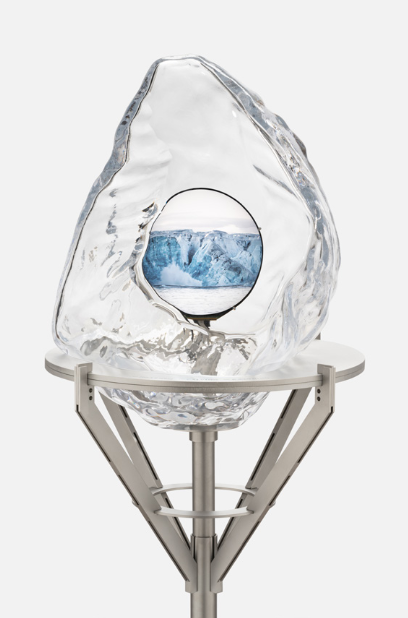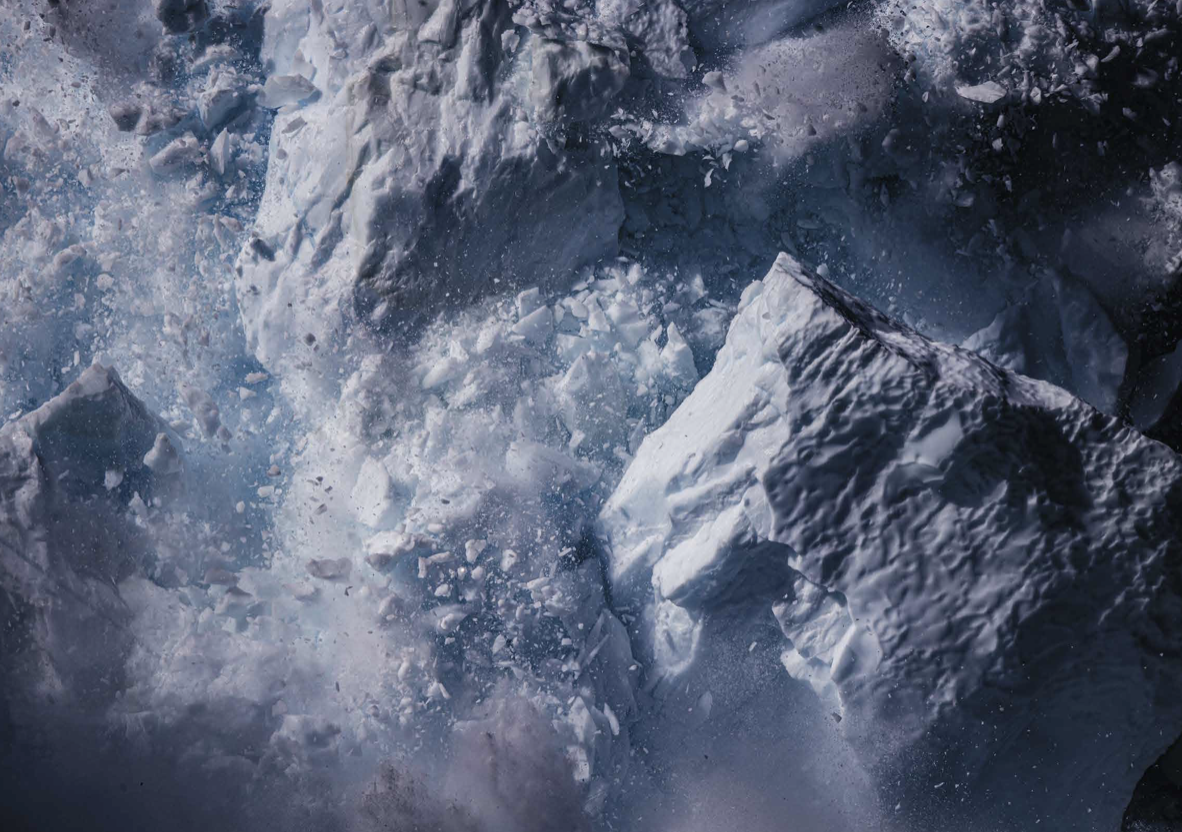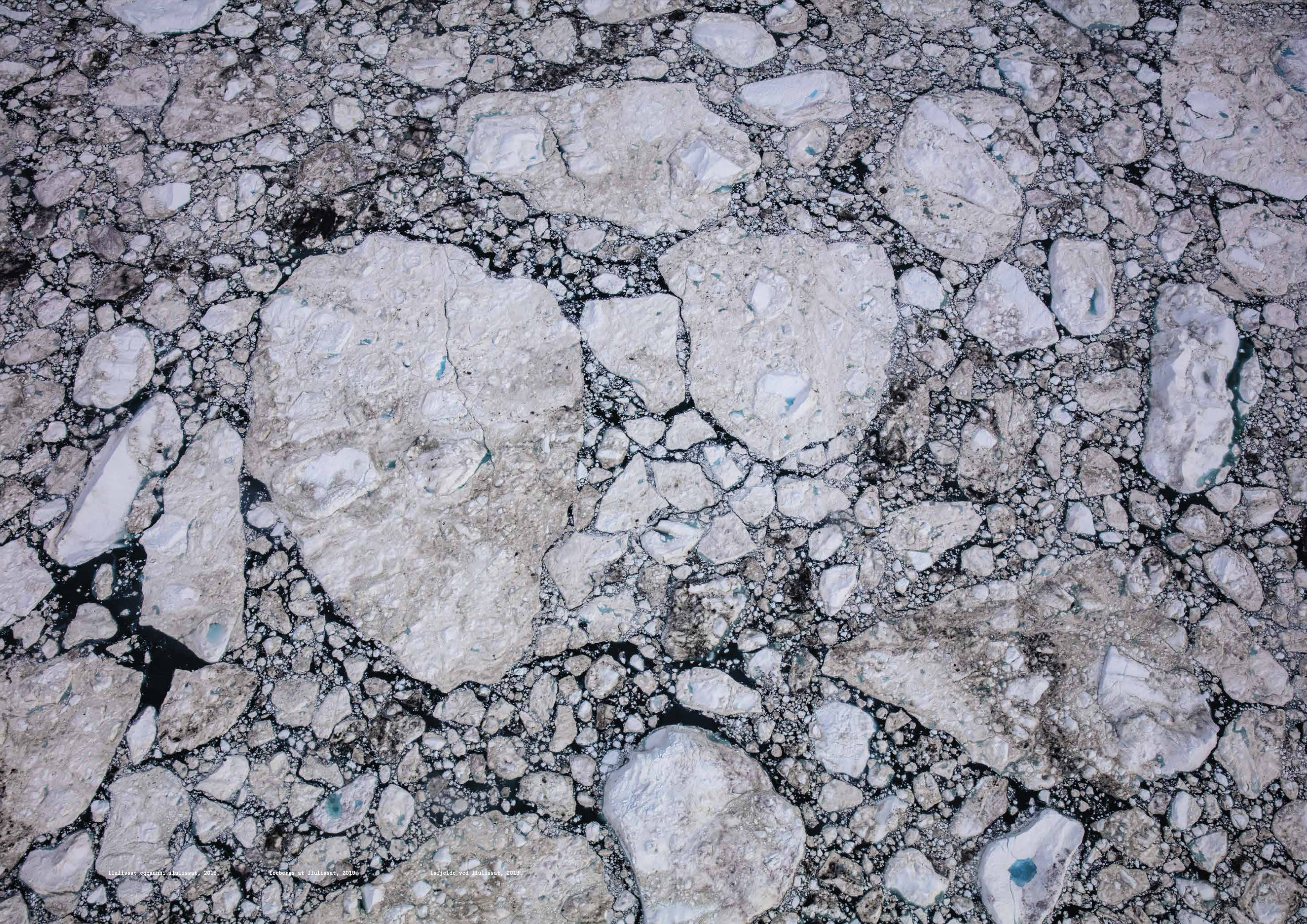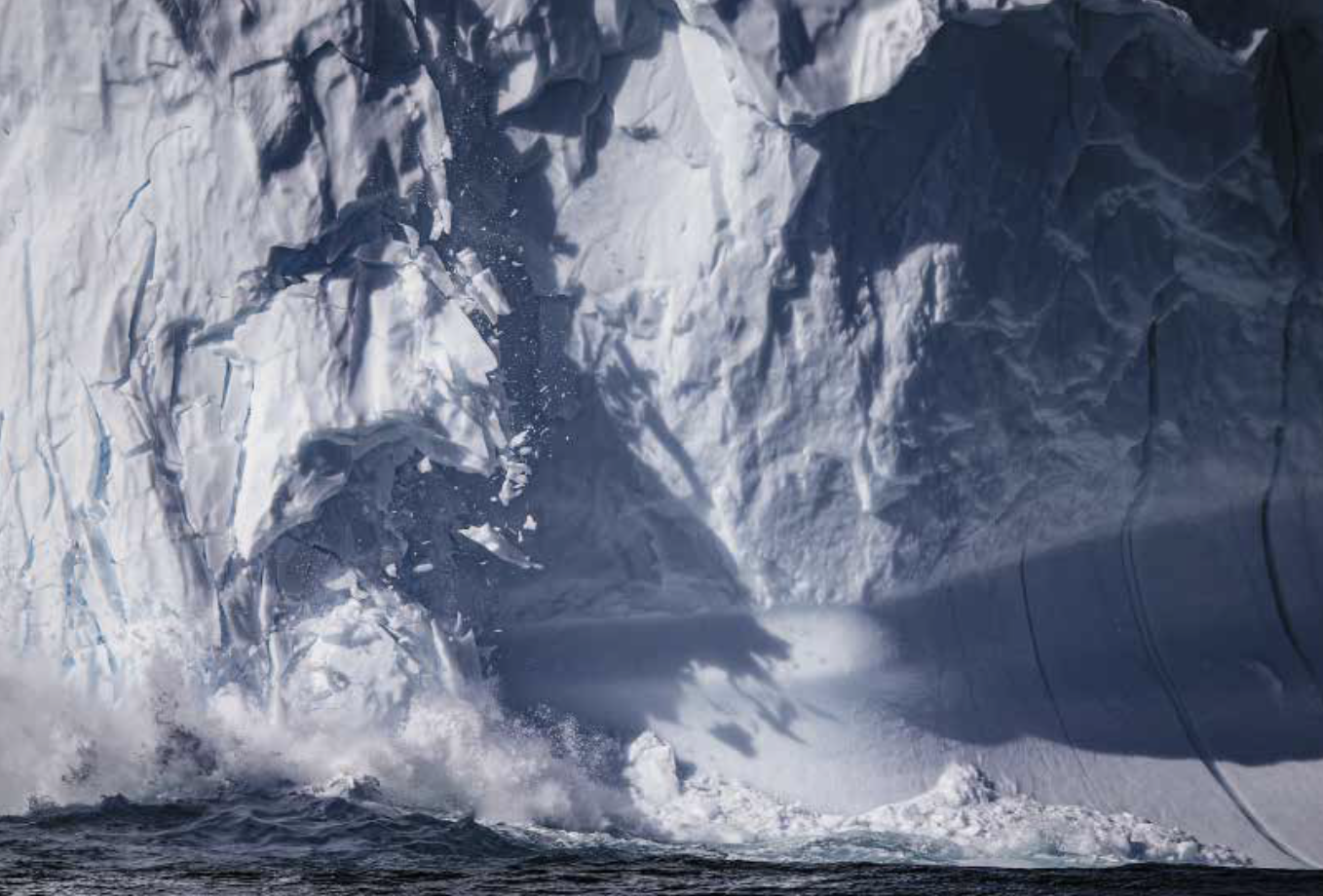CALVING

- Why does Sermeq Kujalleq calve?
- The journey of an iceberg through the Icefjord
- 10% of the icebergs from Greenland’s ice sheet calve from Sermeq Kujalleq
- Calving creates huge waves
You solve the tasks by using
- Text
- Audio
- Drawing tools
- Images
In the book you can find more information about the subject.
When it snows, the glacier grows. The snow layer puts pressure on the lower ice, and the ice moves towards the coast. In summer when the water gets warmer, the glacier is hollowed at the bottom, and large icebergs break off from the front.
In winter smaller ice floes break off.

See the film on slide 10 once more. What colours do you see in the ice breaking off the glacier?
When the ice breaks off the glacier front you say that it calves.
What animals calve and what does it mean?
Some icebergs are so big that they get stranded at the bottom of the Icefjord.
Many icebergs can pile up. They do not drift along until being pressured by new icebergs or having melted enough to get free of the bottom.

The two persons on the bench have been to the Icefjord Centre. What might they be talking about?
The dialogue:
Here you see an aerial photograph of the icebergs at Ilulissat 2019. They come from the glacier Sermeq Kujalleq.
The glacier calves about 40 to 50 km³ each year.
It is the fastest in the world. In summer it moves around 40 metres a day.

On the top of the icebergs something blue is seen. What is that?
How much of the icebergs can be seen above the water?
When the glacier calves, large amounts of ice fall into the sea, which can create huge waves of enormous force.
As it is not known exactly when the glacier calves or an iceberg turns around, it can be dangerous to be on the sea or at the coast in Ilulissat.

Write or record a fairy tale with the title When I and my friend encountered a giant wave.
My story:
When it snows, the glacier grows. The snow layer puts pressure on the lower ice, and the ice moves towards the coast. In summer when the water gets warmer, the glacier is hollowed at the bottom, and large icebergs break off from the front.
In winter smaller ice floes break off.

See the film on slide 10 once more. What colours do you see in the ice breaking off the glacier?
When the ice breaks off the glacier front you say that it calves.
What animals calve and what does it mean?
Some icebergs are so big that they get stranded at the bottom of the Icefjord.
Many icebergs can pile up. They do not drift along until being pressured by new icebergs or having melted enough to get free of the bottom.

The two persons on the bench have been to the Icefjord Centre. What might they be talking about?
The dialogue:
Here you see an aerial photograph of the icebergs at Ilulissat 2019. They come from the glacier Sermeq Kujalleq.
The glacier calves about 40 to 50 km³ each year.
It is the fastest in the world. In summer it moves around 40 metres a day.

On the top of the icebergs something blue is seen. What is that?
How much of the icebergs can be seen above the water?
When the glacier calves, large amounts of ice fall into the sea, which can create huge waves of enormous force.
As it is not known exactly when the glacier calves or an iceberg turns around, it can be dangerous to be on the sea or at the coast in Ilulissat.

Write or record a fairy tale with the title When I and my friend encountered a giant wave.
My story:



